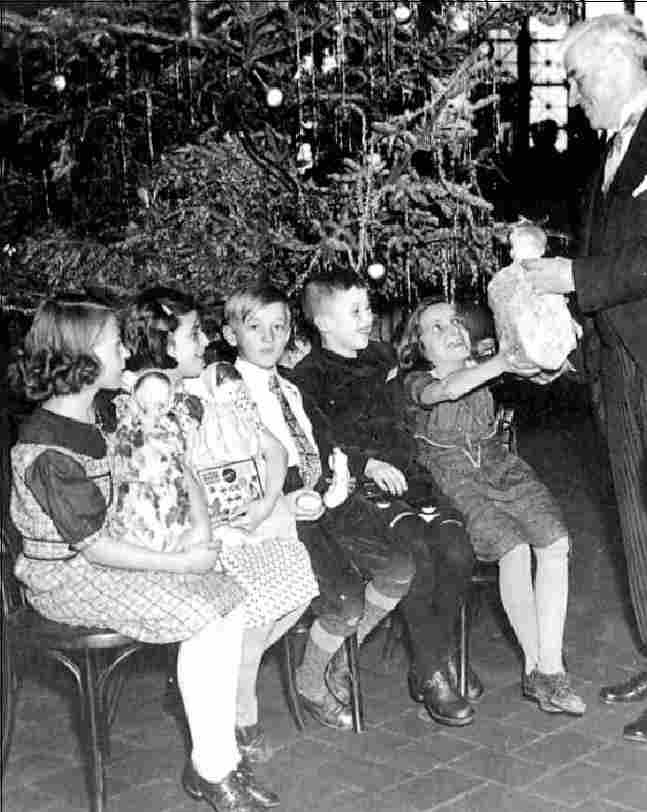America Immigration: Ellis Island
|
No site is more associated with immigration to America than Ellis Island in New York harbor. Immigration was at first largely unestricted, but by the 1890s new laws began to regularize immigration. The symbol of this was the grand brick and limestone buildings constructed on Ellis Islands where immigrants entering the United States through New York were processed. Between 1892 and 1924 over 22 million passengers and members of ships'crews came through Ellis Island and the Port of New York. The facility continued to operate until 1954, but Congress sharply scaled back immigration by establishing national quotas in 1924. While immigration was at its peak, thousands of immigrants daily were processed on Ellis Island. Each prospective immigrant was inspected for disease or disability. The station was structured and arranged, especially the steep stairs, so that inspectors could spot individuals that needed to be closely examined. Over 100 million Americans, about one-third of the population, can trace their ancestry to a man, woman, or child who passed through Ellis Island. Steamship manifest sheet were transferred to inspector's record book in the great Registry Room at Ellis Island. While Ellis Island was the entry point for millions. Substantial numbers never passed through Ellis Island to America. Rejected for a variety of reasons,they had to return to their country.
Historical Site
No site is more associated with immigration to America than Ellis Island in New York harbor. After closing in 1954 the facilities at Ellis Island deteroriated badly. The facilities were renovated and Ellis Island reopened as a historical cebnter in 1990. It is now run as a part of the National Park system along with the nearby Statue of Liberty.
Immigration Reform
Immigration was at first largely unestricted, but by the 1890s new laws began to regularize immigration. The symbol of this was the grand brick and limestone buildings constructed on Ellis Islands where immigrants entering the United States through New York were processed.
Immigrant Flow
Between 1892 and 1924 over 22 million passengers and members of ships'crews came through Ellis Island and the Port of New York. The facility continued to operate until 1954, but Congress sharply scaled back immigration by establishing national quotas in 1924. While immigration was at its peak, thousands of immigrants daily were processed on Ellis Island.
Processing
Each prospective immigrant was inspected for disease or disability. The station was structured and arranged, especially the steep stairs, so that inspectors could spot individuals that needed to be closely examined. Over 100 million Americans, about one-third of the population, can trace their ancestry to a man, woman, or child who passed through Ellis Island. Steamship manifest sheet were transferred to inspector's record book in the great Registry Room at Ellis Island.
Rejections
While Ellis Island was the entry point for millions. Substantial numbers never passed through Ellis Island to America. Rejected for a variety of reasons,they had to return to their country. The image here is a Christmas 1934 scene at Ellis Island. The immigration commissioner Rudoph Reimer is giving presents to the children, who are mostly from Germany. One of the two boys wears knickers with knee socks, a white shirt and tie. The other one seems to wear a dark sweater with short pants and black long stockings. Note that the boy with the long stockings wears round garters rather than the more usual hose supporters. You can see the elastic bands around his upper legs. The boys seem to be about 8 or 9 years old. The boy wearing the knickers was being sent to Milwaukee from Germany. The other children were less lucky. They were at Ellis Island because their parents were being deported--sent back to Europe--and had to pass through Ellis Island as they waited for passports
and sailing arrangements. The girls wear dresses with beige or tan long stockings. Notice the Christmas tree in the background. The children whose parents are being sent back to Europe don't seem too downcast. They seem to be delighted by the present.
Immigrant Aid Efforts
Ellis Island was administered on a beaureaucratic basis. The idea was to get the immogrants into Amnerica as arpidly as possible after primarily health checks. Soon humanitaruan organizations began offering aid to the newly arrived immigrants. Many of these immigrant aid groups set up permanent representatives on Ellis Island. Many but nit all were relgious groups. They were welcomed by the authoriries whi saw the need for such services. They adopted a range of titles: missionary, chaplain, agent, port worker, matron, and social worker. A wonderful example of a social worker is Ludmila Foxlee. The dedicated men and women of these many organizations offered a range of services. These included: counseling, guidance, information, translation, money, food, clothing, reading material, gifts, and religious instruction and services. The services included: the Young Women's Christian Association (YWCA), the Young Men's Christian Association (YMCA), the Daughters of the American Revolution (DAR), the Salvation Army, and the Traveler's Aid Society. Another group of servuces were offered by the ethnic orgabizatiins set up by Italian, German, Polish, Lithuanian and Spanish branches of the Roman Catholic church's St. Raphael's Society, the Hebrew Immigrant Aid Society (HIAS) and National Council of Jewish Women, the White Rose Mission, specifically for Carribbean women, and various other societies exclusively for Belgians, Bulgarians, Dutch, Greeks, Italians, Hungarians, Poles and Russians.
HBC
Navigate the Boys' Historical Clothing Web Site:
[Return to the Main U.S. immigration page]
[About Us]
[Introduction]
[Activities]
[Biographies]
[Chronology]
[Clothing styles]
[Countries]
[Girls]
[Theatricals]
[Topics]
[Bibliographies]
[Contributions]
[FAQs]
[Glossaries]
[Images]
[Index]
[Links]
[Registration]
[Tools]
[Boys' Historical Clothing Home]
Created: March 29, 2004
Last updated: 2:24 AM 9/12/2020


